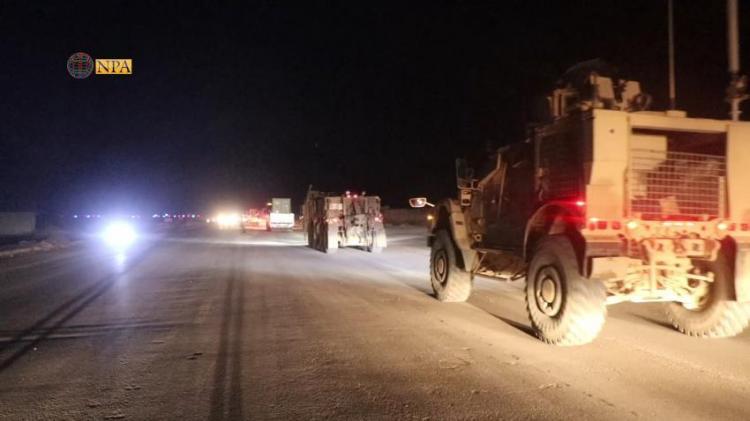“U.S. forces redeploying in oil fields, support to continue for SDF” – Former Trump adviser
Northern Syria – North-Press Agency
A former adviser to the United States President Donald Trump said that the decision to withdraw from areas in northern Syria came after Turkish President Erdogan's determination to enter his forces in the region, which necessitated the American troops to withdraw about 32 km away from the Syrian-Turkish borders.
Walid Phares, a former adviser to the U.S. President Donald Trump and a foreign policy expert said that, the U.S. withdrawal decision was based on the president's assessment that, the positioning of the American forces in northern Syria doesn't allow any confrontation, and that the Turkish leadership won't accept any negotiations on this issue and insist on its operation. Therefore, the President's decision was that, the U.S. forces would withdraw to Hasakah, the Syrian-Iraqi borders and thus to the oil fields areas.
According to the political expert, the first plan, which was to deploy with the Syrian Democratic Forces (SDF) throughout northeastern Syria "is no longer practicable without a massive deployment of the U.S. army and this wasn't possible at that stage, due to strong opposition against the president in Washington, and therefore they resorted to the Plan B, i.e. the withdrawal, but the Turkish government decided to invade, the matter that led Trump to send his deputy to Ankara for negotiations.
The United States and Turkey accepted the principle of "security zone" along the borders and they required the European countries to deploy their troops to protect the entire components of the region.
During his talk, the former advisor to the U.S. President, mentioned the Plan D, which includes reorganizing, rehabilitating, arming and equipping the SDF and reorganizing its positioning, where it includes redeploying in the south of the 30 km line with the remaining U.S. forces, which will deploy in the oil fields and help to reinforce these forces strategically to transform them from a militia into a regular army.
Regarding the oil fields, Walid Phares pointed out that, this decision is made by President Trump directly, who made it clear in his press conference after al-Baghdadi operation that, the U.S. forces will be there as a strategic force which will defend those areas with all their power, which means that, this is a warning to the east and north, and a warning to Turkey that no one will approach these areas and will be large areas, and therefore a warning to Iran that no one approached its forces and militias to those areas, which means that, there will be a military base, areas and supplements where the U.S. forces will be in the middle and the SDF around them.
The political expert stressed that, there is considerable pressure within the U.S. on the administration, pressure from the Congress and from the majority of President Trump's popular base not to give up allies in all components of the SDF, and therefore the Plan B has been converted to the Plan D.
The scenario of the Plan D, as Trump said includes strengthening a base in Iraqi Kurdistan in Erbil, so that the cooperation and coordination between Iraqi Kurdistan and Syrian Kurdistan is necessary without any merge or unity, just strategic cooperation and coordination.
Phares explained that, on this basis the next stage will be repositioning, and "The belief here is that, the SDF lost that region on the borders with Turkey at this stage in order to solve the issues, isn't right because the SDF hasn't lost its people".
Walid Phares told North-Press that, "House of Representative's vote against Turkey and the sanctions means that, the Congress and the administration are determined to continue the partnership with the SDF and the minorities in northeastern Syria and northern Iraq, and to adopt them as strategic partners."
He concluded that, "What is happening on the Syrian-Turkish borders has therapies later. All eyes are now focused on the remnants of ISIS, and on preventing Iranian forces from penetrating into northeastern Syria or approaching northern Iraq once again, where the Kurds are.”

